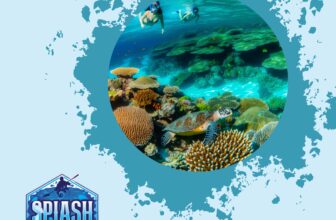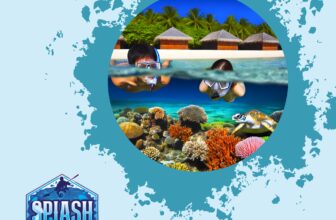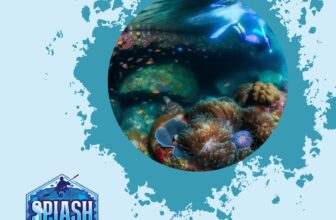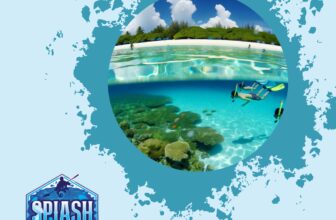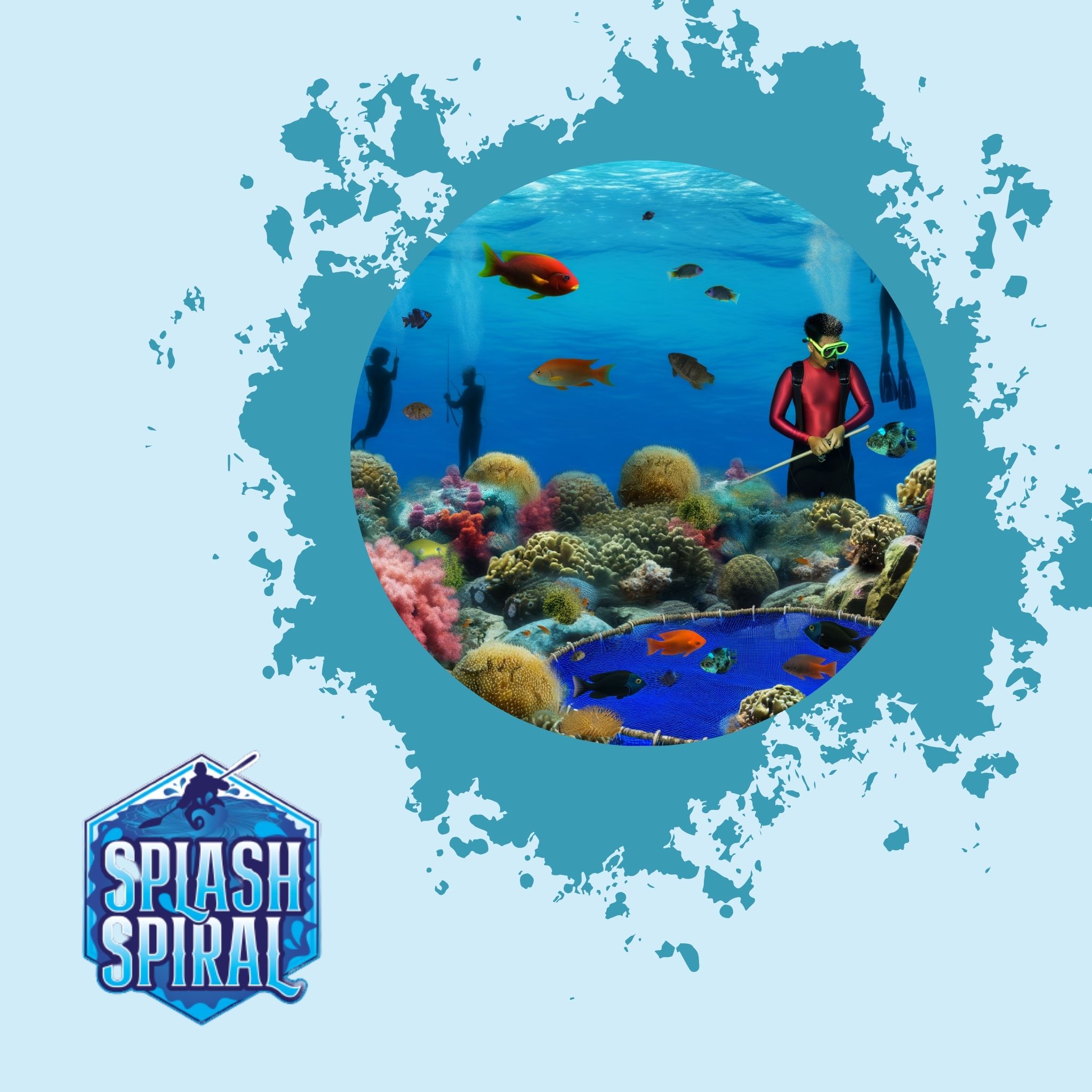
Diving offers a unique opportunity to explore the underwater world, but it also comes with a responsibility to protect and preserve ocean life. Sustainable fishing practices are a significant part of maintaining healthy marine ecosystems. For beginner divers and those eager to start diving, understanding these practices can enhance their respect for and interaction with marine environments. Here’s a no-nonsense guide to sustainable fishing practices for divers.
Introduction
Diving isn't just about strapping on some gear and heading underwater—it's about becoming part of a delicate, interconnected marine world. Sustainable fishing practices are a key piece of that puzzle. For beginners and those looking to dive in, understanding these practices isn't just about being a responsible ocean visitor. It’s about ensuring that the awe-inspiring sights you experience beneath the waves remain vibrant and healthy for years to come.
But why should new divers care about sustainable fishing? Simple—what happens above the water impacts everything below it. Unsustainable fishing methods can decimate fish populations, destroy habitats, and throw marine ecosystems off balance, making your diving environment less diverse and, frankly, less interesting. By getting a handle on sustainable fishing, you’re not just another tourist; you're an active participant in preserving our planet's blue heart. This knowledge equips you with a deeper respect for marine life and empowers you to advocate for practices that protect the underwater worlds you explore.
Understanding Sustainable Fishing Methods
"Sustainable fishing" simply means fishing in a way that ensures we don't deplete fish and marine populations or harm the ocean environment. Think of it as a method that keeps everything in balance—allowing us to enjoy seafood today without compromising the availability for future generations.
Traditional fishing practices often involve techniques that can be pretty harmful to marine ecosystems. For instance, methods like trawling, where large nets sweep across the ocean floor, can be incredibly destructive. They don't just catch the targeted species but also scoops up and damages everything in their path. By-catch, which is the capture of unintended species like dolphins, turtles, and various non-target fish, is another significant issue. This not only threatens biodiversity but also disrupts the intricate balance of marine life.
So, what makes fishing practices sustainable? Here's the lowdown:
Selective Fishing Gear
Using gear that is designed to catch only specific species and sizes of fish can drastically reduce by-catch. For example, hook-and-line fishing targets specific fish and causes minimal habitat damage compared to massive trawling nets. It’s all about precision and reducing waste.
Seasonal Fishing
Fish populations naturally fluctuate with the seasons. Respecting breeding seasons by fishing only outside of these times helps ensure that populations have a chance to reproduce and replenish. This practice helps maintain a healthy fish population, supporting overall ecosystem stability and resilience.
Catch Limits
Establishing and adhering to catch limits—that is, restricting the number of fish that can legally be caught—ensures that fishing activities do not exceed the capacity of fish populations to recover. These limits are based on scientific assessments of fish stocks and are designed to ensure long-term sustainability.
By understanding and supporting these sustainable fishing methods, as a diver, you’re contributing to the greater cause of marine conservation. The underwater world is breathtaking and exploring it responsibly ensures that it stays that way for generations to come.
The Importance of Sustainable Fishing
Understanding the significance of sustainable fishing isn't just about protecting the fish; it's about preserving the entire marine ecosystem, which, in turn, enriches the diving experience. Sustainable fishing supports marine conservation by ensuring that fish populations remain healthy and abundant. This balance is crucial because overfishing can lead to the depletion of key species, which disrupts the food chain and negatively impacts the overall health of ocean habitats.
Healthy fish populations contribute to vibrant reefs, which are essential for a diverse and thriving marine environment. When fish numbers dwindle due to unsustainable practices, the effects are far-reaching. For starters, overfishing diminishes the biodiversity that makes diving so fascinating. Fewer fish lead to less predation and herbivory, which means unchecked algae growth and deteriorating reef health. This directly impacts the diving experience, where divers might find less marine life and degraded coral structures.
Sustainable fishing also helps mitigate the risks of by-catch, which can include endangered species like sea turtles and dolphins. By adopting methods that reduce unintended catches, fishing operations support the survival of these critical players in marine ecosystems. For divers, encountering such species can be a highlight of their underwater adventures. The absence of these creatures due to unsustainable fishing practices would be a significant loss to the diving community.
Moreover, sustainable fishing practices contribute to the long-term health of the ocean by maintaining the species diversity that supports various marine life and habitats. This biodiversity is a cornerstone of a stable and resilient ecosystem, which can better withstand environmental changes and human impacts.
In essence, sustainable fishing and the thriving ecosystems that result from it create a more enjoyable and fulfilling diving experience. For beginner divers, understanding and advocating for sustainable fishing isn't just about being eco-conscious; it's about ensuring that their future dives remain filled with the wonders of a balanced, healthy marine world.
Key Sustainable Fishing Methods
When it comes to preserving our oceans, understanding key sustainable fishing methods is crucial. Here are three important practices that help maintain fish populations and protect marine ecosystems:
-
Selective Fishing: This method employs specific gear and techniques designed to target certain species while minimizing by-catch—unintended capture of other marine creatures. For example, using hook-and-line fishing allows for the catching of particular fish without harming other animals. By being selective, this method reduces waste and supports the health of marine populations.
-
Seasonal Fishing: Just like nature has seasons, so does fishing. Seasonal fishing means only catching fish during certain times of the year when they are most abundant and not during their breeding seasons. This approach helps reduce overfishing and ensures fish populations have time to reproduce and replenish. By following these natural cycles, fishing remains balanced, preventing long-term depletion of fish stocks.
-
Catch Limits: Setting catch limits means restricting the amount of fish that can be harvested within a certain period. These limits are based on scientific assessments of fish populations and are designed to prevent overfishing. By adhering to these limits, fisheries can maintain healthy fish populations and ensure that there are enough fish left in the sea for the future.
Understanding and supporting these sustainable fishing methods can make a big difference. As beginners or aspiring divers, knowing about and advocating for these practices not only enriches your diving experience but also contributes to the broader effort of marine conservation.
As a Diver, How Can You Promote Sustainable Fishing?
Learn and Share: The first step in promoting sustainable fishing is to educate yourself. Understand local fishing regulations and sustainable practices specific to the areas where you dive. Regulations can vary greatly, so staying updated is crucial. Once you’ve armed yourself with this knowledge, share it with fellow divers. Whether it’s through conversations on the boat or discussion forums online, spreading awareness helps build a community that values and practices sustainability.
Support Sustainable Seafood: Your choices on land can vastly influence the underwater world. Opt for seafood that comes from sustainable sources. Look for certifications like the Marine Stewardship Council (MSC) label when buying fish or dining out. By choosing sustainably harvested seafood, you’re supporting fisheries that prioritize the health of marine ecosystems over short-term gains.
Engage in Advocacy: As passionate as you are about diving, channel some of that energy into advocacy for marine life. Participate in local and global conservation efforts. This could include signing petitions, attending public hearings on fishing regulations, or even supporting organizations dedicated to marine conservation. Your voice, combined with many others, can lead to impactful changes in policies and practices.
By integrating these practices, you’re not just enjoying the beauty of the ocean; you’re actively participating in preserving it for future generations. Dive in with mindfulness and make each plunge count.
Eco-friendly Practices for Divers
No-Touch Policy
When diving, it's tempting to reach out and touch marine life or coral formations. However, this can cause significant harm:
- Marine life: Often delicate, and the oils or pressure from human touch can damage coral and distress animals.
- Coral formations: Vulnerable to even slight pressure, which can lead to long-term damage.
Adopting a strict no-touch policy is essential for preserving these ecosystems. Remember, look but don't touch.
Buoyancy Control
Good buoyancy control isn't just about comfort; it's crucial for protecting the underwater environment. Here’s why:
- Prevents accidental collisions: Avoid damaging coral reefs and the seafloor by maintaining good buoyancy.
- Efficiency: Moving through the water efficiently reduces your impact on the environment.
Practice regularly to maintain excellent buoyancy control.
Debris Collection
Debris in the ocean is a major problem, and divers can play a pivotal role in cleaning it up:
- Participate in clean-up dives: Help remove trash and discarded fishing gear.
- Positive example: Sets a good precedent for other divers and beachgoers.
Always carry a mesh bag for collecting debris, but ensure it's safe and feasible to do so without risking harm to yourself or the environment.
The Role of Divers in Marine Conservation
As a beginner diver, you might think that marine conservation is best left to scientists and seasoned environmentalists. Think again. Divers have a unique vantage point that can significantly contribute to marine research and monitoring efforts. Your underwater observations can provide valuable data on the health of marine ecosystems. Noticing changes in coral formations, fish populations, or spotting signs of pollution can all play a part in larger conservation efforts.
Diver awareness is critical when it comes to protecting underwater habitats. The more informed you are about the delicate nature of these environments, the better you can act to preserve them. For instance, understanding the impact of touching corals or disturbing marine life can lead to more responsible diving practices that minimize harm.
Additionally, divers can help mitigate coastal erosion, which is a significant threat to marine habitats and dive sites. By documenting erosion patterns and participating in coastal restoration projects, divers can be at the forefront of conservation efforts. Erosion not only affects land but also the underwater world, where sediments can smother coral reefs and disrupt marine ecosystems. Learn more about this issue and practical ways you can contribute by referencing this link.
In summary, your role as a diver goes beyond exploration. By becoming more engaged in marine conservation, you help ensure that the beauty and biodiversity of underwater worlds are preserved for future generations. So, gear up, dive in, and be a steward of the sea.
Recognizing and Reporting Unsustainable Practices
Being a responsible diver isn't just about your own actions underwater; it's also about keeping an eye out for what's happening around you. Unfortunately, unsustainable and illegal fishing practices can be a real problem in many dive locations. Here’s how you can play your part in spotting and reporting these harmful activities.
Spotting Unsustainable Practices
Illegal Fishing Methods
- Dynamite Fishing: Hearing unusual explosions underwater can be an indicator.
- Cyanide Fishing: Look for fish that seem unnaturally lethargic or easy to catch.
Overfishing
- Absence or extreme scarcity of certain fish species that typically populate the area can be a sign.
Damaged Gear and Discarded Nets
- Watch out for abandoned fishing gear like nets, lines, and other equipment that can harm marine life.
Reporting Unsustainable Practices
Now that you know what to look for, here’s what to do if you come across any suspicious activities:
Document What You See
- Safely take photos or videos of the illegal or unsustainable practices. This evidence can be crucial for authorities.
Notify Local Authorities
- Be aware of the relevant authorities in your dive area. Inform your dive leader if you're with a tour operator.
Utilize Reporting Apps and Hotlines
- Many regions have hotlines and mobile apps for reporting illegal fishing. Research and install these apps before your trips.
- Programs like "Dive Against Debris" offer a platform to report underwater hazards.
Being Part of the Solution
Engage with Local Groups
- Connect with local dive shops and conservation groups to learn how to support sustainable practices.
Promote Sustainable Fishing
- Your vigilance can help protect marine environments for future divers.
By staying informed and proactive, you contribute to a larger movement ensuring our oceans remain vibrant and healthy. Now, with your increased awareness, every dive becomes an opportunity to protect the underwater world we all cherish.
Resources for Further Learning
Enhancing your knowledge about sustainable fishing practices is key to becoming a responsible diver. Check out these resources to deepen your understanding:
Educational Links
-
Marine Parasites and Ecosystem Health
- Learn about how marine parasites play a crucial role in maintaining the balance of ocean ecosystems and what this means for sustainable fishing.
- Read more here.
-
Sustainable Seafood Guides
- Organizations like the Monterey Bay Aquarium’s Seafood Watch provide up-to-date guidelines on choosing sustainable seafood.
- Visit their website to access regional guides and apps.
Organizations
- Marine Conservation Organizations
- Groups like Oceana, the Marine Stewardship Council, and Sea Shepherd offer educational resources and opportunities for involvement in conservation efforts.
Webinars and Courses
- Educational Webinars and Courses
- Institutions such as the Reef Environmental Education Foundation (REEF) offer webinars and courses on marine conservation and sustainable fishing.
Books and Documentaries
- Books and Documentaries
- Consider reading books like "The Ocean of Life" by Callum Roberts.
- Watch documentaries such as "Seaspiracy" on Netflix to gain a broader perspective on the impact of fishing practices.
Investing time in these resources will arm you with the knowledge to make informed decisions and advocate for sustainable fishing, both underwater and above, ensuring a vibrant ocean for future generations.
Conclusion
Sustainable fishing practices are crucial for preserving the breathtaking marine ecosystems that divers love to explore. As a beginner diver or someone eager to take the plunge, understanding and promoting these practices isn't just good for the planet—it enhances your diving adventures. By being mindful of how your choices and actions impact the underwater world, you help ensure that the vibrant marine life and stunning underwater landscapes remain healthy and accessible for future dive trips. Dive in responsibly, stay curious, and always advocate for a sustainable ocean environment.
Additional Internal Links
- Explore more about scuba diving.
- Dive deeper into diving adventures and tips.



